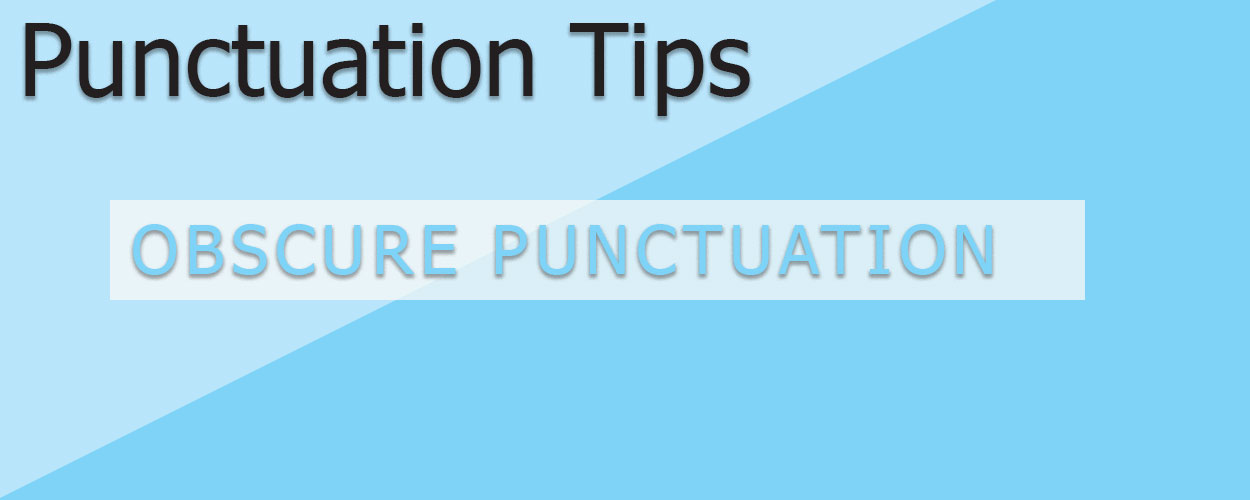

Posted: April 2, 2024
When someone says “punctuation,” people’s minds often jump to the most common—periods, commas, quotation marks—but what about those that are less often used? While not typically used in fiction, when they do get used, they are just as capable of being used incorrectly, so I’ve compiled a list of the more obscure pieces of punctuation.
Chevrons, also called “angled brackets,” are mainly used in coding (to open and close commands), and as such, is rarely seen in fiction, if ever.
The chevron can also be called a guillemet (see below), which are used as quotation markers in some countries. Though, unlike chevrons, which use only a single horizontal v shape, guillemets have two.
Braces, also called “curly brackets,” are used to mark pauses and represent choices/preferences. As such, they are more commonly used in non-fiction such as academic writing or instructions.
However, their main use lies in mathematics, where braces are used to denote numerical sets of numbers.
Typically used the same way as quotation marks in many non-North American countries, such as France, Russia, Germany, Italy, etc. They can either face inward »…« or outward «…», based on the country in which they are being used. They require a space before and after, so put a non-breaking space on each side within the quotation.
A dagger works in conjunction with an asterisk (*) and double dagger for footnotes. It can also be known as an obelisk, while a double dagger is known as a diesis.
A more morbid use for a dagger is to denote death, either directly before a person’s name or before the year of their death. (An asterisk can be used the same way for year of birth.)
Derived from the French et meaning and, the ampersand is used in place of the word and in various instances, usually for pairs. However, it is informal and should not be used in typical fiction or formal writing unless as a stylistic choice (such as for logos or business names mentioned within the writing)
An asterisk, as mentioned above in the dagger section, is mainly used in conjunction with the dagger and/or double dagger for footnotes.
An asterisk can also be used to denote the year of birth.
Also commonly known as the number sign, the pound sign, and (by younger generations) the hashtag, the octothorpe is believed to have been adopted by the telecommunications industry with the advent of touch-tone dialing in the 1960s. It is mainly used in computing and telephony, though nowadays often exists chiefly for hashtag use on social media sites such as Twitter (now X), TikTok, and Instagram.
The Period
The Colon
The Question Mark
The Apostrophe
Double Quotation Marks
Parentheses
The Slash
Obscure Punctuation
Aaron, J.E. & Morrison, A. The Little, Brown Compact Handbook, 5th Canadian ed. Pearson, 2013, chap 5
Judd, K. Copyediting, A Practical Guide, 3rd ed. California, CA: Crisp Learning, 2001, chap 4
Tigerpetal Press is a small book press dedicated to publishing local authors and poets.